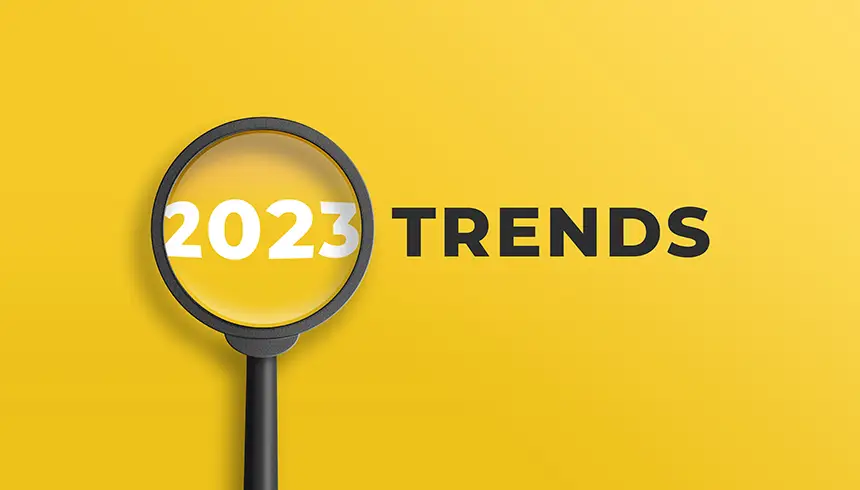The content management space continues to evolve, driven by the need for brands to create digital experiences that appeal to their customers across numerous channels. Headless and composable architecture enables businesses to achieve greater flexibility, scalability, and agility, as well as provide more personalized experiences to their customers.
Brands that want to take advantage of these approaches should be aware of the top headless and composable architecture trends set to dominate in 2023:
- Continued growth of headless CMSs
- Headless CMSs focus on better content authoring
- Composable architecture growth
- More frontend as a service tools
- An increase in Digital Experience Composition (DXC) tools
- The expansion of marketplace and plugins
- More AI for content use cases
Continued Growth of Headless CMSs
While many traditional CMSs still dominate market share, expect headless CMSs to continue eating away at market share and attract more enterprises in 2023. The data backs this up, too, with WordPress, which had been showing steady growth over the last decade, now reaching a plateau in the last 12 months, according to W3Tech. Meanwhile, the headless CMS market is forecasted to grow at a CAGR of 22.6% over the next 10 years and reach $5.5 billion by 2032.
When web content management was restricted to just websites and some mobile apps, traditional CMSs offered the perfect architecture for most businesses. Today, however, we live in an omnichannel world where content needs to be presented on multiple platforms, which is more easily achieved with a headless CMS. Plus, with a headless CMS, businesses can gain more flexibility, adaptability, and scalability, not to mention the improved security headless offers over a traditional CMS.
Headless CMSs Focus on Better Content Authoring
As headless CMSs continue to gain more adoption, expect vendors to ensure that they provide their customers with the key features they need, particularly concerning content authoring. Initially, marketers shied away from headless platforms because many lacked the intuitive and user-friendly content authoring features they required. However, leading platforms have been focusing on providing a more traditional CMS authoring interface that includes drag-and-drop experience building, WYSIWYG content editing, and visual UX.
Vendors who lacked these features had already started to upgrade their authoring tools to support these requirements. In 2023, expect those that lack the authoring features required to invest in upgrading and those that already featured these capabilities to continue doubling down and improving the experience.
Composable Architecture Growth
In keeping with the growth of headless CMSs, enterprises are turning away from the faults of monolithic architecture and turning toward composability instead. Composable architecture is a design principle that focuses on creating modular, composable systems that can be easily assembled and reassembled to meet changing business needs. In a composable architecture, large systems are broken down into smaller, reusable components or services that can be combined to create more complex systems as needed.
Rather than subject themselves to the perils of vendor lock-in, businesses are seeking out the benefits of adaptability and flexibility that composable architecture can offer. Companies will continue to look toward composable DXPs and composable commerce to build their technology stacks instead of relying on all-in-one suites. Composable architecture is expected to be a key trend in 2023 and beyond as businesses look to become more agile, flexible, and efficient in response to changing market conditions and customer needs.
More Frontend-as-a-Service Tools
Frontend as a service (FEaaS) allows organizations to combine different frontend components modularly to create digital experiences faster and more cost-efficiently. FEaaS tools feature prebuilt, composable front-end widgets, integrations, and connectors to backends as well as studio tools to assemble these integrations and the infrastructure to deploy and operate them. As the need for composability in various forms increases, expect organizations to turn to FEaaS tools to help them.
An Increase In Digital Experience Composition Tools
Digital experience composition (DXC) enables enterprises to handle digital experience development and delivery using headless and composable tools. DXC can be used to compose digital experiences from best-of-stack components such as content, analytics, search, commerce, personalization, and more. It also enables business users to streamline day-to-day activities and increase productivity.
In 2023, expect the emergence of more DXC tools that allow organizations to realize the benefits of composability and the freedom to choose multiple vendors to meet their business requirements.
The Expansion of Marketplaces, Plugins, and Packaged Business Capabilities
In order to facilitate DXC and composability, leading vendors will want to make it as easy as possible for organizations to orchestrate and integrate with complimentary tools. As a result, marketplaces with plugins and packaged business capabilities (PBCs) will expand to provide smoother integrations that benefit both developers and business users.
More AI for Content Use Cases
Artificial intelligence has caught everyone’s attention since the tail end of 2022 with the emergence of ChatGPT. Since then, numerous content-focused services have leveraged the technology. With the speed and efficiency benefits offered by these generative AI tools, businesses are finding ways to incorporate them into their workflows. In 2023, expect businesses to discover more content-focused use cases for artificial intelligence, including integrations with CMSs and other tools.

 Mike Vertal
Mike Vertal




